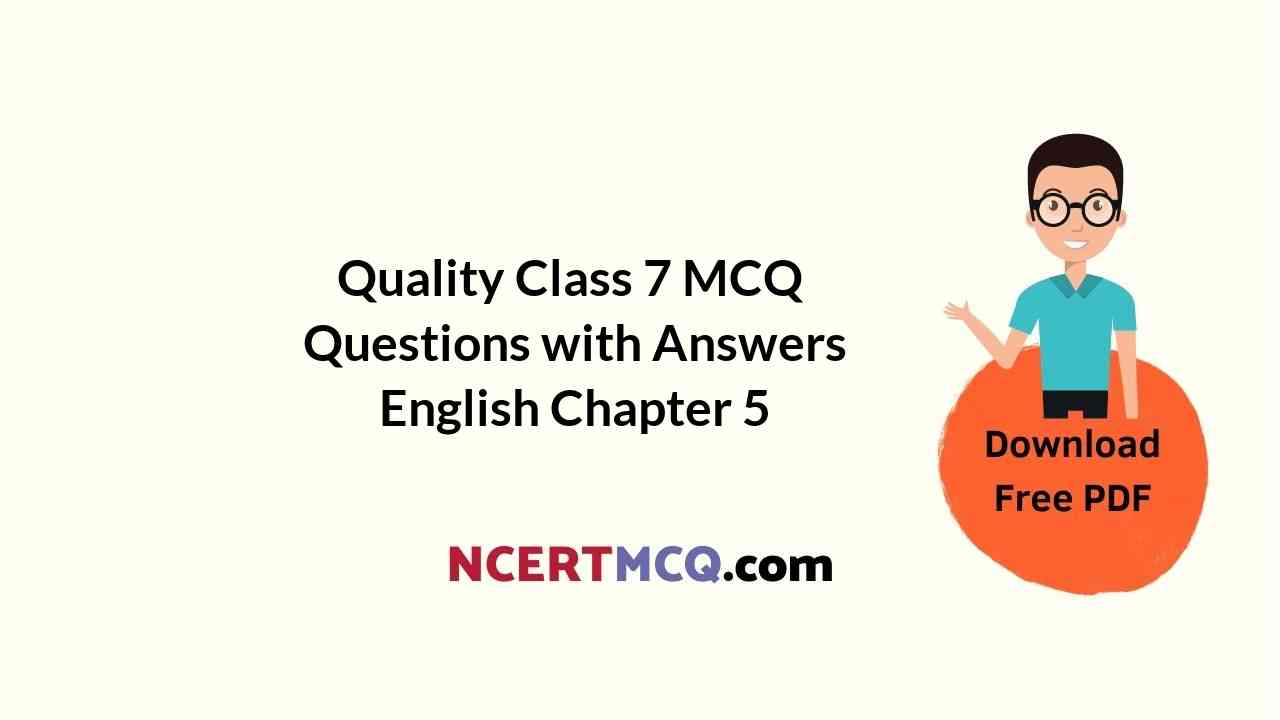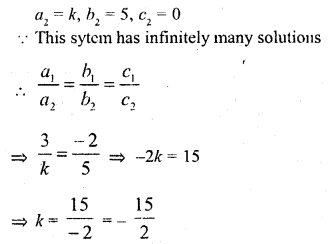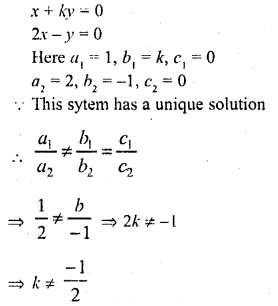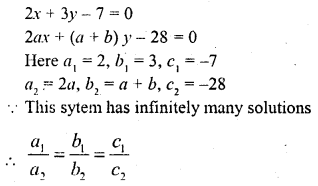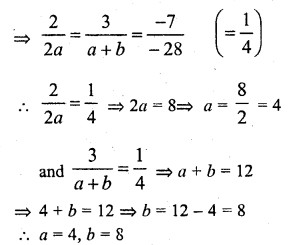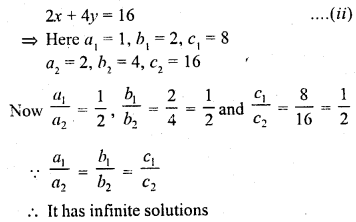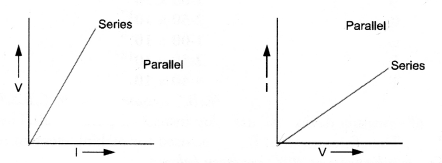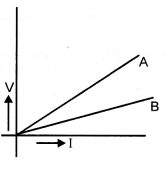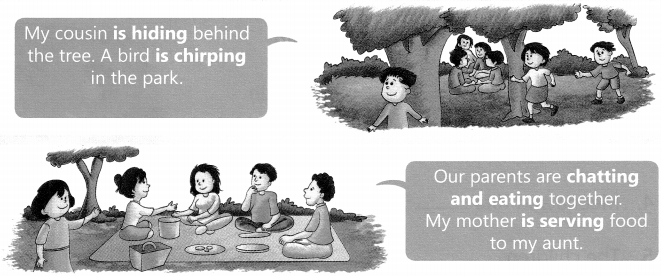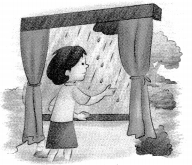We have given detailed Online Education NCERT Solutions for Class 6 Sanskrit Ruchira Chapter 13 विमानयानं रचयाम Textbook Questions and Answers come in handy for quickly completing your homework.
Online Education NCERT Solutions for Class 6 Sanskrit Ruchira Chapter 13 विमानयानं रचयाम
Class 6th Sanskrit Chapter 13 विमानयानं रचयाम Textbook Questions and Answers
अभ्यासः
प्रश्न 1.
पाठे दत्तं गीतं सस्वरं गायत।
उत्तर:
छात्र स्वयं सस्वर गाएँ।
प्रश्न 2.
कोष्ठकान्तर्गतेषु शब्देषु तृतीया-विभक्तिं योजयित्वा रिक्तस्थानानि पूरयत
यथा- नभः चन्द्रेण शोभते। (चन्द्र)
(क) सा ………. जलेन मुखं प्रक्षालयति। (विमल)
(ख) राघवः ………. विहरति। (विमानयान)
(ग) कण्ठः ………………….. शोभते। (मौक्तिकहार)
(घ) नभः ……………………. प्रकाशते। (सूर्य)
(ङ) पर्वतशिखरम् ………. आकर्षकं दृश्यते। (अम्बुदमाला)
उत्तर:
(क) विमलेन
(ख) विमानयानेन
(ग) मौक्तिकहारेण
(घ) सूर्येण
(ङ) अम्बुदमालया/अम्बुदमालाभिः
प्रश्न: 3.
भिन्नवर्गस्य पदं चिनुत — भिन्नवर्गः
यथा- सूर्यः, चन्द्रः अम्बुदः शुक्रः। — अम्बुदः
(क) पत्राणि, पुष्पाणि, फलानि, मित्राणि …………..
(ख) जलचरः खेचरः, भूचरः, निशाचरः। …………..
(ग) गावः, सिंहाः, कच्छपाः, गजाः। …………..
(घ) मयूराः, चटकाः, शुकाः मण्डूकाः। …………..
(ङ) पुस्तकालयः, श्यामपट्टः, प्राचार्यः, सौचिकः। …………..
(च) लेखनी, पुस्तिका, अध्यापिका, अजा। …………..
उत्तर:
(क) मित्राणि
(ख) खेचरः
(ग) कच्छपाः
(घ) मण्डुकाः
(ङ) सौचिकः
(च) अजा
प्रश्न: 4.
प्रश्नानाम् उत्तराणि लिखत
(क) के वायुयानं रचयन्ति? …………..
(ख) वायुयानं कं-कं क्रान्त्वा उपरि गच्छति? …………..
(ग) वयं कीदृशं सोपानं रचयाम? …………..
(घ) वयं कस्मिन् लोके प्रविशाम? …………..
(ङ) आकाशे काः चित्वा मौक्तिकहारं रचयाम? …………..
(च) केषां गृहेषु हर्ष जनयाम? …………..
उत्तर:
(क) (विमान अभियन्तारः) बालकाः वायुयानं रचयन्ति।
(ख) वायुयानं उन्नतवृक्षं तुङ्गं भवनं क्रान्त्वा उपरि गच्छति।
(ग) वयं हिमवन्तं सोपानं रचयाम।
(घ) वयं चन्दिरलोके प्रविशाम।
(ङ) आकाशे विविधाः ताराः चित्वा मौक्तिकहारं रचयाम।
(च) दु:खित-पीड़ित-कृषिक जनानां गृहेषु हर्ष जनयाम।
प्रश्नः 5.
विलोमपदानि योजयत
उन्नतः – पृथिव्याम्
गगने – असुन्दरः
सुन्दरः – अवनतः
चित्वा – शोकः
दुःखी – विकीर्य
हर्षः – सुखी
उत्तर:
उन्नत – अवनतः
गगने – पृथिव्याम्सुं
दर: – असुन्दरः
चित्वा – विकीर्य
दु:खी – सुखी
हर्षः – शोकः।
प्रश्नः 6.
समुचितैः पदैः रिक्तस्थानानि पूरयत
उत्तर:


प्रश्नः 7.
पर्याय-पदानि योजयत
गगने – जलदः
विमले – निशाकरः
चन्द्रः – आकाशे
सूर्यः – निर्मले
अम्बुदः – दिवाकरः
उत्तर:
गगने – आकाशे
विमले – निर्मले
चन्द्रः – निशाकरः
सूर्यः – दिवाकरः
अम्बुदः – जलदः।
Class 6th Sanskrit Chapter 13 विमानयानं रचयाम Additional Important Questions and Answers
प्रश्न 1.
निम्न पङ्क्तीन् पठित्वा तदाधारिताना प्रश्नानाम् उत्तराणि लिखत (निम्न पंक्तियों को पढ़करउसपर आधारित प्रश्नों के उत्तर लिखिए)
उन्नतवृक्षं तुझं भवनं
क्रान्त्वाकाशं खलु याम।
कृत्वा हिमवन्तं सोपानं
चन्दिरलोकं प्रविशाम ।।
I. एकपदेन उत्तरत (एक शब्द में उत्तर दीजिए)
(i) वयं कीदृशं भवनं क्रान्त्वा आकाशं याम?
(ii) वयं उन्नतवृक्षं क्रान्त्वा कुत्र याम?
उत्तर:
(i) तुङ्गम्
(ii) आकाशम्
II. पूर्ण वाक्येन उत्तरत (पूरे वाक्य में उत्तर दीजिए)
(i) वयं किं कृत्वा चन्दिरलोकं प्रविशाम?
उत्तर:
(i) वयं हिमवन्तं सोपानं कृत्वा चन्दिरलोकं प्रविशाम।
III. भाषिक कार्यम् (भाषा सम्बन्धी कार्य)
(i) ‘क्रान्त्वाकाशं खलु याम’। अत्र क्रियापदं किम्?
(क) आकाशम्
(ख) खलु
(ग) याम
(घ) आकाशे
उत्तर:
(ग) याम
(ii) ‘हिमवन्तं सोपानम्’ अनयोः पदयोः विशेषणं किम् अस्ति?
(क) हिमवन्तम्
(ख) हिमवतः
(ग) सोपानः
(घ) सोपानम्
उत्तर:
(क) हिमवन्तम्
प्रश्न 2.
निम्नश्लोकं पठित्वा रिक्तस्थानानि पूरयत (नीचे लिखे श्लोक को पढ़कर खाली स्थानों को भरिए)
शुक्रश्चन्द्रः सूर्यो गुरुरिति
ग्रहान् हि सर्वान् गणयाम।
विविधाः सुन्दरताराश्चित्वा
मौक्तिकहारं रचयाम ।।
अन्वयः-
(वयं) शुक्रः चन्द्रः
(i) गुरुः इति सर्वान्
(ii) हि गणयाम। विविधाः
(iii) चित्वा
(iv) रचयाम।
उत्तर:
(i) सूर्यः
(ii) ग्रहान्
(iii) सुन्दरताराः
(iv) मौक्तिकहारं।
प्रश्न 3.
उचितानि पदानि सम्मेलयत ( उचित शब्दों को मिलाइए)
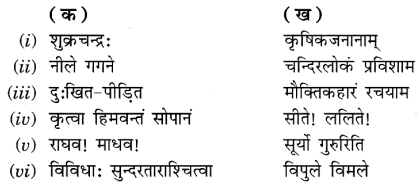
उत्तर:
(i) सूर्यो गुरुरिति
(ii) विपुले विमले
(iii) कृषिकजनानाम्
(iv) चन्द्रिरलोकं प्रविशाम,
(v) सीते! ललिते!
(vi) मौक्तिकहारं रचयाम।
प्रश्न 4.
निम्न पदानि पठित्वा प्रश्नवाचकानि पदानि लिखत (नीचे लिखे पदों को पढ़कर प्रश्नवाचक पदों को लिखिए)
यथा- सूर्यः
(i) अम्बुदमालाम् – …………………
(ii) हर्षम् – …………………
(iii) उन्नतवृक्षम् – …………………
(iv) सर्वान् – …………………
(v) सुन्दरताराः – …………………
(vi) चन्दिरलोकम् – …………………
उत्तर:
(i) काम्
(ii) किम्
(iii) कम्,
(iv) कान्
(v) काः
(vi) कुत्र।
प्रश्न 5.
पर्यायपदानि चित्वा लिखत (पर्यायवाची पदों को चुनकर लिखिए)
पदानि – पर्यायाः
(i) आकाशे – सूर्यः
(ii) स्वच्छे – हर्षम्
(iii) चन्द्रः – गगने
(iv) दिनकरः – चन्दिरः
(v) प्रसन्नताम् – विमले
उत्तर:
(i) गगने
(ii) विमले
(iii) चन्दिर
(iv) सूर्यः
(v) हर्षम्।
